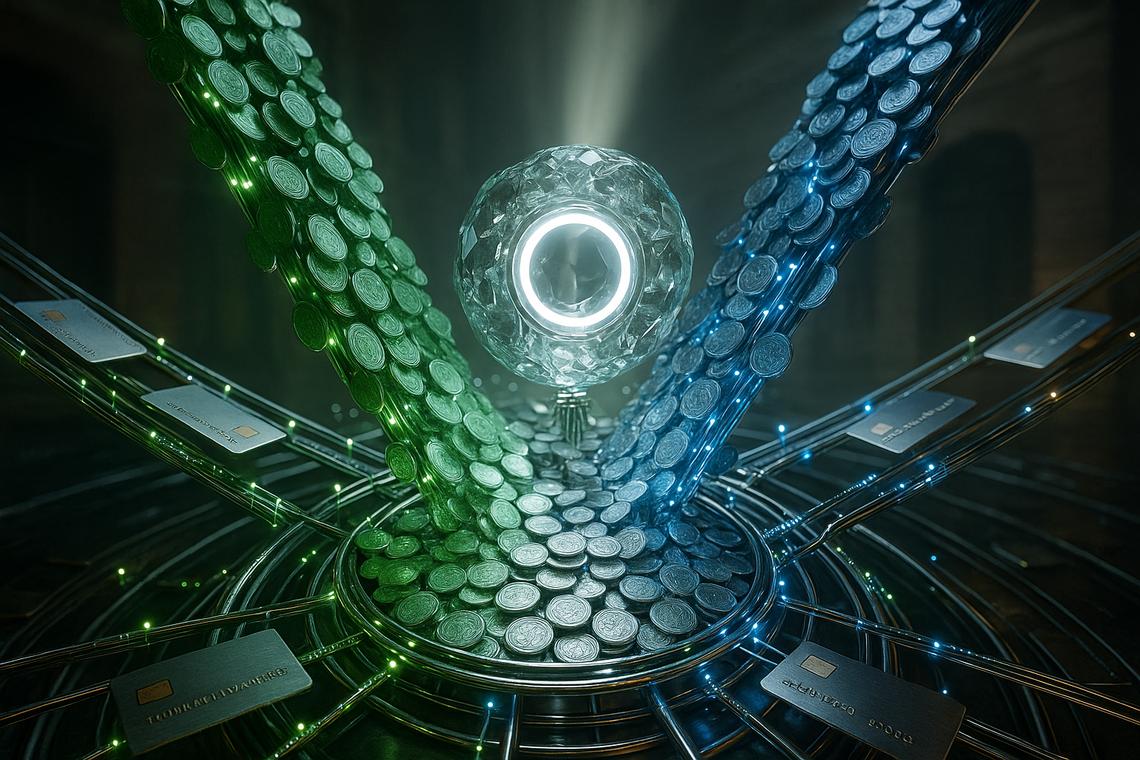Scaling the Future: Insights from Quai Network Co-Founder Jonathan Downing
https://unseen.co/projects/quai-network/
As part of the DLT Talents program-designed to empower women from various backgrounds, including tech, law, business, or those new to crypto, to explore blockchain and boost awareness-I had the opportunity to interview Jonathan Downing. He’s a co-founder and the lead engineer at Dominant Strategies, the firm behind Quai Network. Jonathan’s deep knowledge in blockchain scalability and Proof-of-Work advancements has been pivotal in developing Quai’s multi-chain framework.
Quai Network is a Layer-1 blockchain addressing the scalability trilemma, delivering over 50,000 transactions per second while preserving decentralization and security. It stands out as the first decentralized energy dollar on a programmable PoW blockchain, with a dual-token system: QUAI as the gas token and store of value, and Qi as the energy-backed stablecoin. Our discussion delved into Quai’s origins, technical breakthroughs, challenges, and future plans-tailored to inspire interest among DLT Talents participants and newcomers alike.
The interview took place via Zoom voice call on July 5, 2025. Here’s the full breakdown:
Can you share your background and what pulled you into blockchain?
Jonathan: My interest in blockchain began with Bitcoin during high school, similar to my co-founders. At the University of Texas at Austin, I co-founded the Texas Blockchain Club, connecting with Alan Orwick, Karl Kreder, Yanni Georghiades, and Sriram Vishwanath-we shared a drive for scalability and cryptography. After graduation, I pursued software engineering, focusing on data management and operational efficiency. This foundation led to my role as chief architect at Dominant Strategies, where we’re constructing Quai Network to overcome the constraints of conventional blockchains and enable seamless global finance.
How did the concept for Quai Network originate?
Jonathan: Quai originated from research at UT Austin in 2019, solidifying into a project by 2020. We identified flaws in existing blockchains, such as Ethereum’s high fees and limited TPS, and sought to build a scalable PoW network. Instead of relying on Layer-2 add-ons that increase complexity, Quai integrates scalability at the protocol level through multi-chain architecture. The Dominant Strategies team worked collaboratively, incorporating academic research and empirical testing. The goal is to revitalize the crypto movement, making blockchain practical for daily transactions at speeds comparable to Visa, all while staying decentralized.
What’s been your most memorable experience with Quai?
Jonathan: A highlight was deploying our latest testnet, engaging over 2,000 nodes worldwide and 5,500 GPUs. It was thrilling to see diverse participants-miners, developers, and enthusiasts-collaborate on testing. This wasn’t just a technical achievement; it demonstrated Quai’s potential for broad adoption. We’ve managed over a billion transactions, achieved 170+ days of uptime, and reached peaks of 2,167 TPS. Experiences like these reinforce our purpose: democratizing blockchain access.
What are Quai Network’s primary products and features?
Jonathan: Quai is fundamentally a scalable multichain blockchain that employs Proof-of-Work as an oracle for real-world demand and energy pricing. This supports our dual-token model: QUAI, the deflationary gas token and value store, and Qi, a stablecoin tied to energy markets. Core features include:
- Multi-Chain Architecture: Protocol-level sharding for effortless interoperability and high throughput (50,000+ TPS).
- Proof-of-Entropy Minima (PoEM): An innovative consensus mechanism ensuring security and efficiency.
- Developer Resources: Simplified integration for dApps, prioritizing low fees and true decentralization.
- Additional tools we’ve created: go-quai (a Go implementation for the network), Pelagus (wallet), Blip (for messaging or integrations), and Kipper (mining/node software). Unlike asset-backed stablecoins, Qi achieves stability through market mechanisms, positioning Quai as a versatile platform for DeFi, payments, and more.
What challenges has Quai encountered in the blockchain landscape recently?
Jonathan: Scalability continues to be the primary obstacle-many networks depend on Layer-2 solutions, which can introduce centralization and added layers of complexity. We’ve addressed this directly with our multi-chain design and PoEM consensus, bypassing those dependencies. Regulatory ambiguities and debates over PoW’s energy consumption present additional hurdles, but Quai leverages PoW as an asset by connecting it to tangible energy economics. Our testnets have allowed iterative improvements, processing billions of transactions. The forthcoming fourth testnet and mainnet launch will further navigate these in a dynamic industry.
How has Quai’s technology developed since its inception?
Jonathan: From initial research in 2019 onward, Quai has evolved through developmental phases dubbed “Stone Age” and “Bronze Age.” We’ve enhanced multi-chain interoperability, optimized PoW for better energy use, and incorporated community-driven governance. Recent developments include refined developer tools and ecosystem integrations. A Messari protocol analysis underscored our strengths, and partnerships-such as with Kyle Chassé of Master Ventures-have endorsed our trajectory. With testnets operational, we’re primed for mainnet and expanded adoption.
What’s on the horizon for Quai Network, and any advice for women venturing into blockchain?
Jonathan: We’re preparing for the fourth testnet and mainnet rollout, fostering ecosystem growth through additional dApps and collaborations. In the long term, we aspire to compete with traditional systems like Visa via cost-effective, decentralized transactions. For women entering blockchain-regardless of technical experience-begin with exploration. Programs like DLT Talents offer excellent networking opportunities. Immerse in communities, experiment with tools such as our Pelagus wallet, and contribute perspectives from fields like law or business; diversity strengthens blockchain.
Closing Reflections
This interview with Jonathan provided profound insights, particularly through my lens as a DLT Talents participant. Quai Network transcends typical projects by resolving entrenched issues like scalability and energy efficiency, paving the way for crypto’s global integration. Through this piece, the aim is to heighten awareness and encourage participation among women and beginners in the space.
For more on Quai Network, visit qu.ai or follow @QuaiNetwork on X. Details on DLT Talents are at web3-talents.io/dlt-talents. What aspects of scalable blockchains intrigue you? Share in the comments!
Scaling the Future: Insights from Quai Network Co-Founder Jonathan Downing was originally published in Coinmonks on Medium, where people are continuing the conversation by highlighting and responding to this story.
You May Also Like

Bitcoin mining company Bitfury launches $1 billion investment plan, focusing on companies in AI, quantum computing, and other fields.

VISA and Wirex launch on-chain payments in USDC and EURC on Stellar
